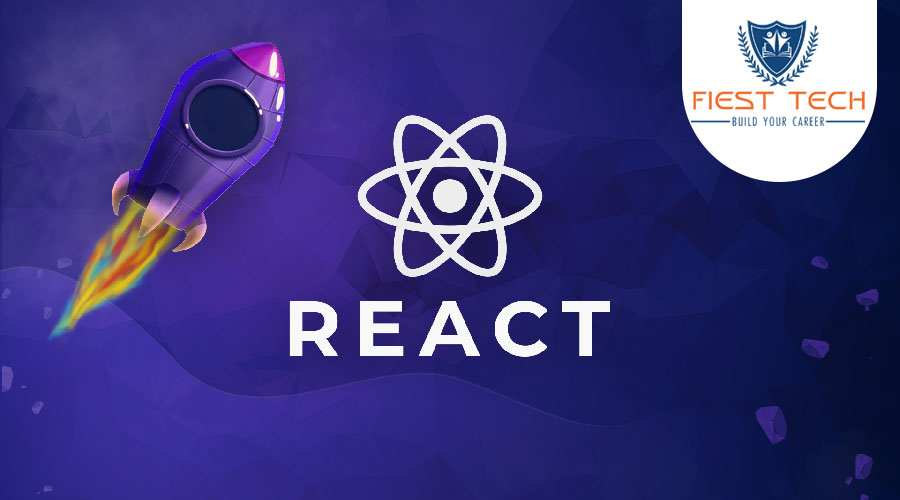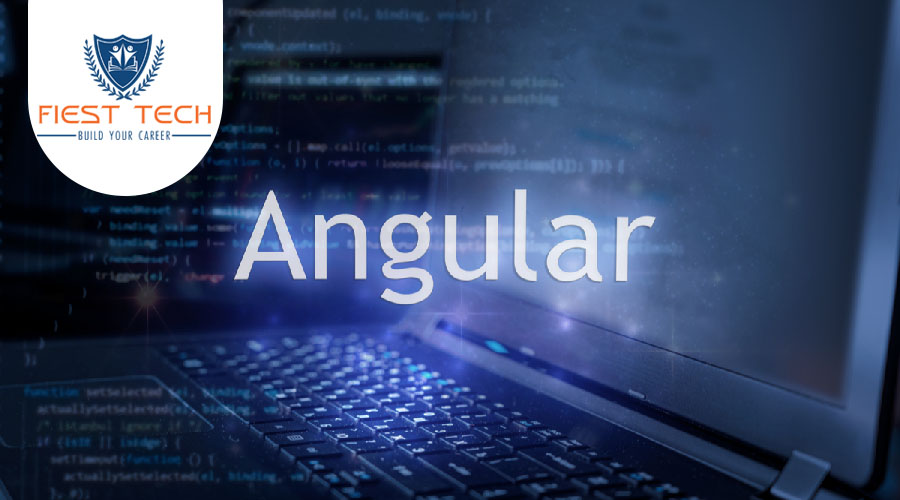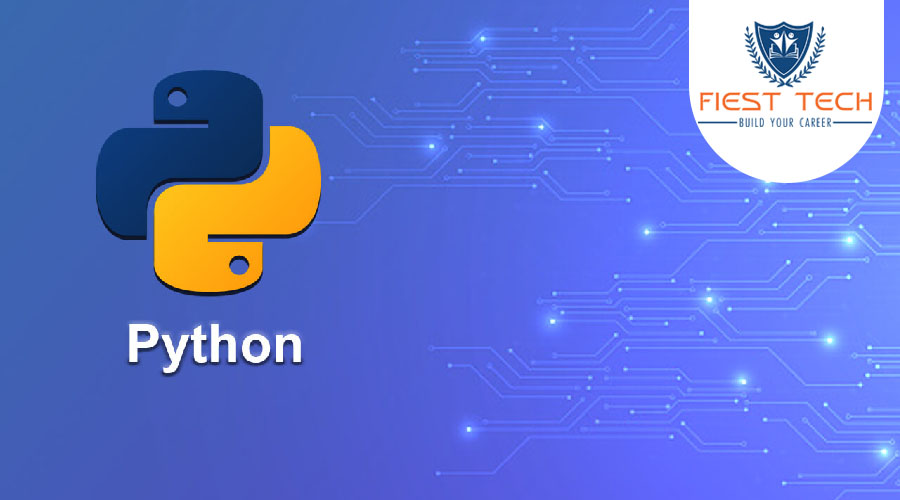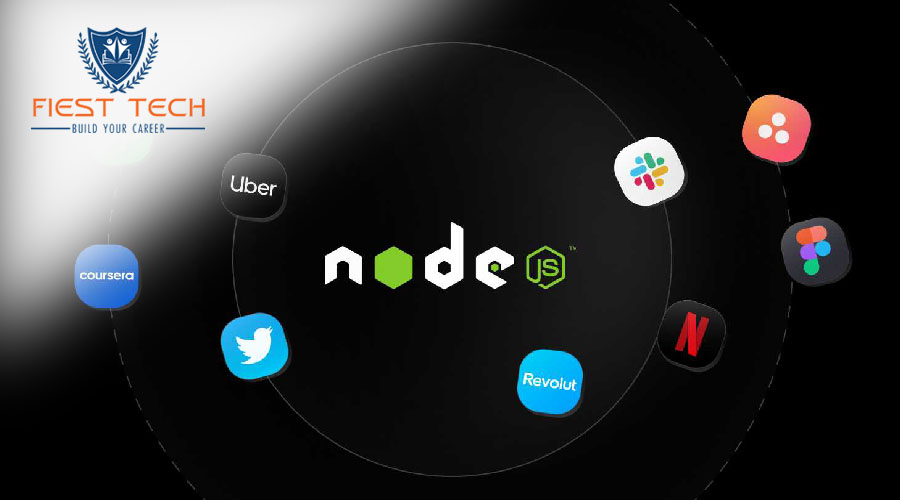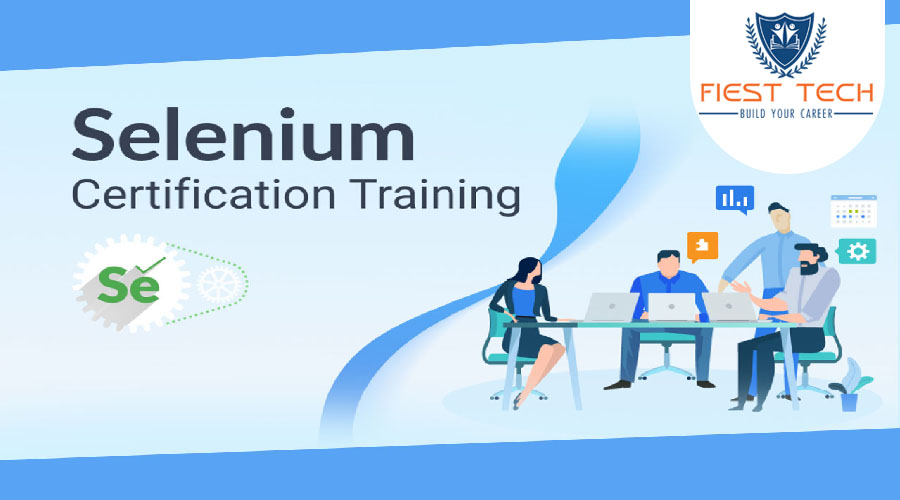Angular Training Overview
Fiesttech’s Angular certification course helps you understand the design of single-page applications and how Angular facilities their development. This Angular certification provides knowledge of concepts such as TypeScript, Bootstrap Grid System, dependency injections, SPA, forms, pipes, promises, observables, and Angular class testing.
Angular is versatile and can be used to build a wide range of applications, from simple websites to complex enterprise-level applications. This versatility allows developers to work on various projects and industries, expanding their skillset and career options.
Angular Certification Training Key Features
At Fiesttech, we value the trust of our patrons immensely. But, if you feel that this Angular Certification Training does not meet your expectations, we offer a 7-day money-back guarantee. Just send us a refund request via email within 7 days of purchase and we will refund 100% of your payment, no questions asked!
100% Refund Guarantee
- TypeScript
- Component Architecture
- Dependency Injection
- Forms and Form Validation
- HTTP Interception
- State Management
Skills Covered
- Angular architecture
- Work with TypeScript
- Service dependency injection
- Work with MVC
- Use custom pipes
- Perform unit testing
- Use Angular CLI
- Develop UI using Bootstrap
Benefits
Angular offers a wide range of career opportunities for developers in the web development industry. This powerful front-end framework, developed and maintained by Google, has a strong presence in the tech world, and its popularity continues to grow.
Annual Salary
Hiring Companies
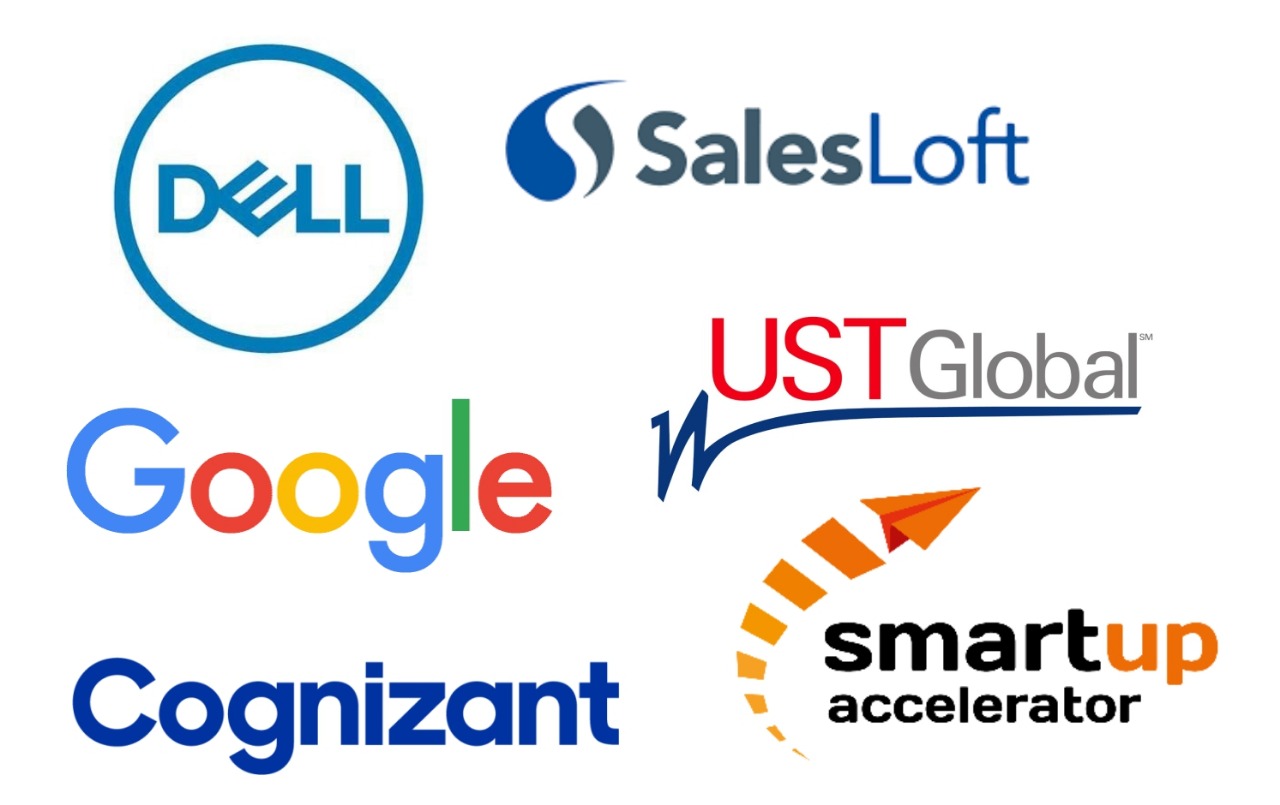
Annual Salary
Hiring Companies
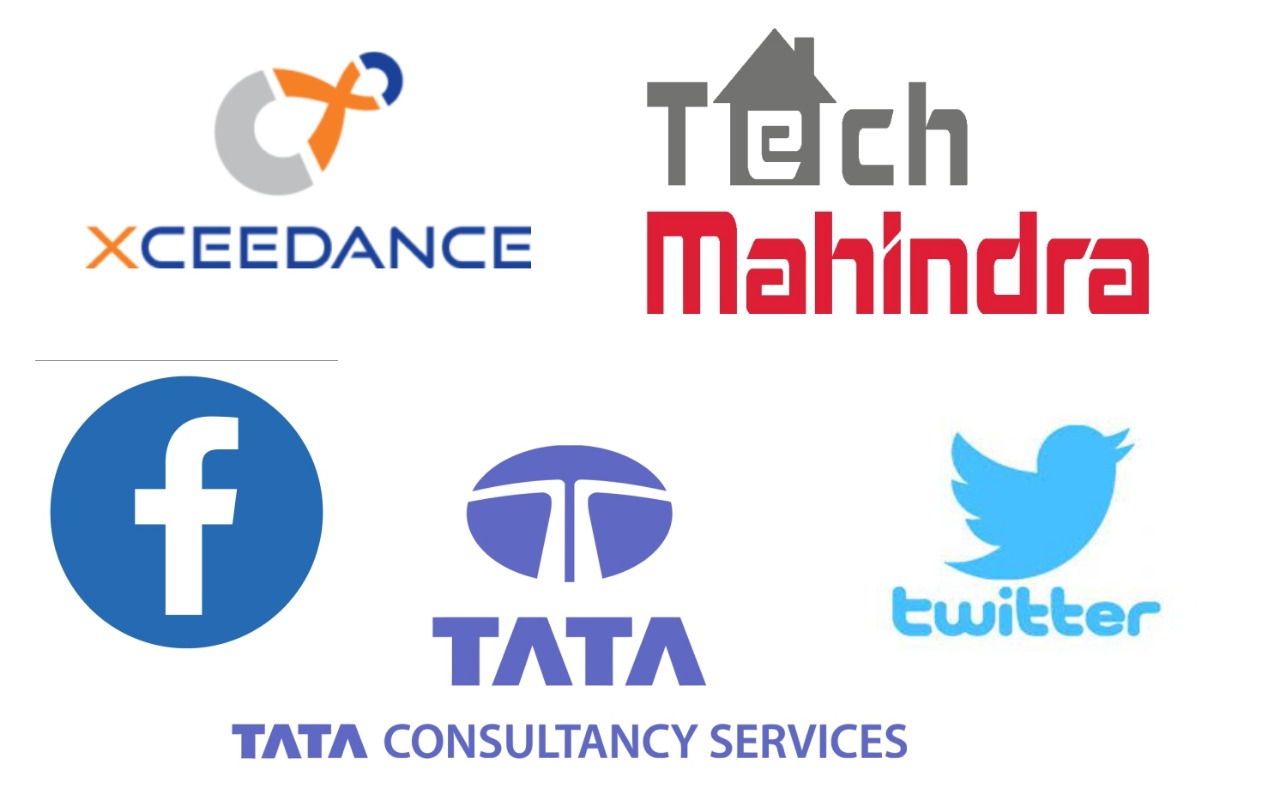
GO AT YOUR OWN PACE
Training Options
Explore all of our training options and pick your suitable ones to enroll and start learning with us! We ensure that you will never regret it!
Course Curriculum
Eligibility
This Angular certification course is ideal for UI developers, technical project managers, full stack web developers, quality assurance specialists, architects, and students who wish to learn front-end UI development using concepts of Angular.
Pre-requisites
There are no prerequisites for taking up this Angular Certification Training Course.
Course Content
Live Course
Self Paced
-
1.01 - Lesson 01 - Single page Applications
0 -
1.02 - Lesson 02 - TypeScript and ESNext
0 -
1.03 - Lesson 03 - Decorators
0 -
1.04 - Lesson 04 - Component Decorator
0 -
1.05 - Lesson 05 - Angular Routing
0 -
1.06 - Lesson 06 - Dependency Injection
0 -
1.07 - Lesson 07 - Directives
0 -
1.08 - Lesson 08 - Forms in Angular
0 -
1.09 - Lesson 09 - Using Third Party Libraries
0
-
3.01 - 2.01 Module Introduction and Introduction to TypeScript
04:04 -
3.02 - 2.02 Setting up the environement to write TypeScript
02:49 -
3.03 - 2.03 Variable declarations (var, let, and const)
09:11 -
3.04 - 2.04 Types - Primitives
04:23 -
3.05 - 2.05 Types - Reference and Special Types
11:22 -
3.06 - 2.06 Operators - Spread and Backticks
05:54 -
3.07 - 2.07 Operators - Destructure and Rest
04:23 -
3.08 - 2.08 Classes
03:22 -
3.09 - 2.09 Interface
05:11 -
3.10 - 2.10 Arrow Functions
08:06 -
3.11 - 2.11 Modules
13:21 -
3.12 - 2.12 fetch
07:21 -
3.13 - 2.13 async or await
04:11
-
4.01 - 3.01 Module Introduction and an overview of Angular Modules
01:23 -
4.02 - 3.02 What are decorators
02:33 -
4.03 - 3.03 Angular Modules and the @NgModule Decorator
04:56 -
4.04 - 3.04 Declarations
13:12 -
4.05 - 3.05 Imports and Exports
07:43 -
4.06 - 3.06 providers, bootstrap, and entryComponents
07:11 -
4.07 - 3.07 Angular Application Bootstrap Mechanism
06:00
-
5.01 - 4.01 Module Introduction
02:12 -
5.02 - 4.02 Angular Components and the @Component Decorator
05:55 -
5.03 - 4.03 Creating an Angular Component using the Angular CLI and on StackBlitz
06:54 -
5.04 - 4.04 Component Decorator Metadata
08:43 -
5.05 - 4.05 View Encapsulation - Emulated, ShadowDom, None
05:54 -
5.06 - 4.06 Data Binding - String Interpolation - {{ }}
02:49 -
5.07 - 4.07 Property Binding - []
05:54 -
5.08 - 4.08 Event Binding - ()
08:11 -
5.09 - 4.09 @Input and @Output Property Decorators
19:12 -
5.10 - 4.10 Two-way Data Binding - [()]
12:11 -
5.11 - 4.11 Attribute Binding - [attr.]
09:33 -
5.12 - 4.12 Class Binding - [class.]
04:50 -
5.13 - 4.13 Style Bindings - [style.]
06:00 -
5.14 - 4.14 Introduction to Lifecycle Hooks in Angular
02:49 -
5.15 - 4.15 Using Lifecycle Hooks in Angular
23:11 -
5.16 - 4.16 View Queries - View Child, View Children, Content Child, Content Children
23:43 -
5.17 - 4.17 Change Detection Mechanism in Angular. ZoneJS, NgZones
17:11
-
6.01 - 5.01 Introduction to Routing
06:54 -
6.02 - 5.02 Implementing Routing in an Angular App
09:54 -
6.03 - 5.03 Creating a User List. Setting the stage for Child Routing
07:12 -
6.04 - 5.04 Abstracting the user link to a separate component
02:49 -
6.05 - 5.05 Implementing Child Routes
04:56 -
6.06 - 5.06 Path Match and Route Types
03:49 -
6.07 - 5.07 Introduction to Route Guards in Angular
19:11 -
6.08 - 5.08 CanActivate and CanActivateChild Guards in Angular
02:11 -
6.09 - 5.09 CanDeactivate Guard in Angular
01:11 -
6.10 - 5.10 Prefetching Data for a Component using Resolve
11:11
-
7.01 - 6.01 Introduction to Section
01:23 -
7.02 - 6.02 DI as a Pattern, DI as a Framework and Types of Providers
10:11 -
7.03 - 6.03 Hierarchical Dependency Injection
10:11 -
7.04 - 6.04 Introduction to Services in Angular
02:11 -
7.05 - 6.05 GET data from a Rest API using HttpClient
22:11 -
7.06 - 6.06 CRUD Operations using HttpClient, HttpParams and HttpHeaders
25:11 -
7.07 - 6.07 Observables and Operators in Observables - Map, Retry, Catch
11:11 -
7.08 - 6.08 Behavior Subject and Sharing Data using Behavior Subjects
10:11
-
8.01 - 7.01 Introduction to Section
01:11 -
8.02 - 7.02 Introduction to Directives
02:49 -
8.03 - 7.03 Built in Structural Directives
19:11 -
8.04 - 7.04 Built in Attribute Directives
12:11 -
8.05 - 7.05 Building custom Attribute Directives
04:54 -
8.06 - 7.06 Building Custom Structural Directives
12:32 -
8.07 - 7.07 Introduction to Pipes in Angular
10:11 -
8.08 - 7.08 Using Built In Pipes
11:11 -
8.09 - 7.09 Creating Custom Pipes in Angular
16:11 -
8.10 - 7.10 Pure and Impure Pipes in Angular
17:11 -
8.11 - 7.11 Decorators Revisited
11:11 -
8.12 - 7.12 Building Custom Decorators in Angular
09:10 -
8.13 - 7.13 Building a Custom Lifecycle Hook Class Logger Decorator
15:11 -
8.14 - 7.14 Building Custom Property Decorator in Angular
01:49
-
9.01 - 8.01 Introduction to Section
01:49 -
9.02 - 8.02 Types of Form Building Strategies in Angular
02:11 -
9.03 - 8.03 Creating Long Bootstrap forms quickly using VS Code using Emmet
09:11 -
9.04 - 8.04 Adding FormControl(s) to a Template Driven form using the ngModel directive
03:49 -
9.05 - 8.05 Getting the JavaScript Object Representation of a form using ngForm directive
02:49 -
9.06 - 8.06 Disabling the Submit Button on a Form using form's $invalid flag
02:49 -
9.07 - 8.07 Getting the JavaScript Object Representation of a form in TypeScript Class
10:11 -
9.08 - 8.08 Adding Checkbox, Radio Buttons and Select List to your Template Driven Form
02:49 -
9.09 - 8.09 Creating Subsections in the form using NgModelGroup directive
10:22 -
9.10 - 8.10 Steps to implement a Reactive form in Angular
07:11 -
9.11 - 8.11 Quickly creating a Bootstrap form for our Reactive form using Emmet
08:11 -
9.12 - 8.12 Creating a Reactive form in the TypeScript class & connecting it to the template
21:11 -
9.13 - 8.13 Adding form Validations to a Reactive Form
10:54 -
9.14 - 8.14 Dynamically Adding or Removing FormControl(s) or FormGroup(s) using FormArray(s)
10:21 -
9.15 - 8.15 Adding Synchronous Custom Validations to your Reactive Form
07:54 -
9.16 - 8.16 Adding Async Custom Validations to your Reactive Form
06:44 -
9.17 - 8.17 Resetting the value of a form
02:49
-
10.01 - 9.01 Introduction to the Section
01:49 -
10.02 - 9.02 Creating an Angular CLI Project with SCSS as a base style
04:54 -
10.03 - 9.03 Introducing Material Design Bootstrap into your Angular CLI Project
07:55 -
10.04 - 9.04 Adding a Navbar in your header
05:44 -
10.05 - 9.05 Adding Material Design Buttons
08:54 -
10.06 - 9.06 Adding Cards`
06:55 -
10.07 - 9.07 Using Material Design Dropdowns and Form Inputs
09:11 -
10.08 - 9.08 Introducing Angular Material into your Angular CLI Project on the top of MDB
07:11 -
10.09 - 9.09 Adding Radio Buttons, Slide Toggle, Slider, Progress Bar and Spinner
11:11 -
10.10 - 9.10 Introduction to Firebase
02:11 -
10.11 - 9.11 Creating an App using the Firebase Console
02:49 -
10.12 - 9.12 Setting up your Angular CLI Project to support Firebase
11:22 -
10.13 - 9.13 Interacting with Firebase Realtime Database using methods on AngularFireList
02:49 -
10.14 - 9.14 Adding and Reading Data from Realtime Database in Firebase
09:54 -
10.15 - 9.15 Updating and Deleting Data from Realtime Database in Firebase
02:49

Angular Certification Training Exam & Certification
Online Classroom:
Attend one complete batch of Angular Certification Course
Successful completion and evaluation of any one of the given projects
Online Self-learning:
Complete 85% of the Angular Certification Course
Successful completion and evaluation of any one of the given projects
We would suggest you visit Simplilearn’s article on frequently asked Angular interview questions. This will help refresh your Angular knowledge to confidently tackle the interview.
How do I become an AngularJS Developer?
AngularJS is a framework to develop dynamic web apps, and it can be thought of as an extension of HTML. It is highly recommended to learn the fundamentals of HTML, JavaScript, CSS, and web application to start with AngularJS. You can start your own by learning all the basics or opt for training programs designed by field experts to expedite your learning. Our Angular certification course facilitates learning basics such as TypeScript, Bootstrap Grid System, dependency injections, SPA, forms, pipes, promises, observables, and Angular class testing.
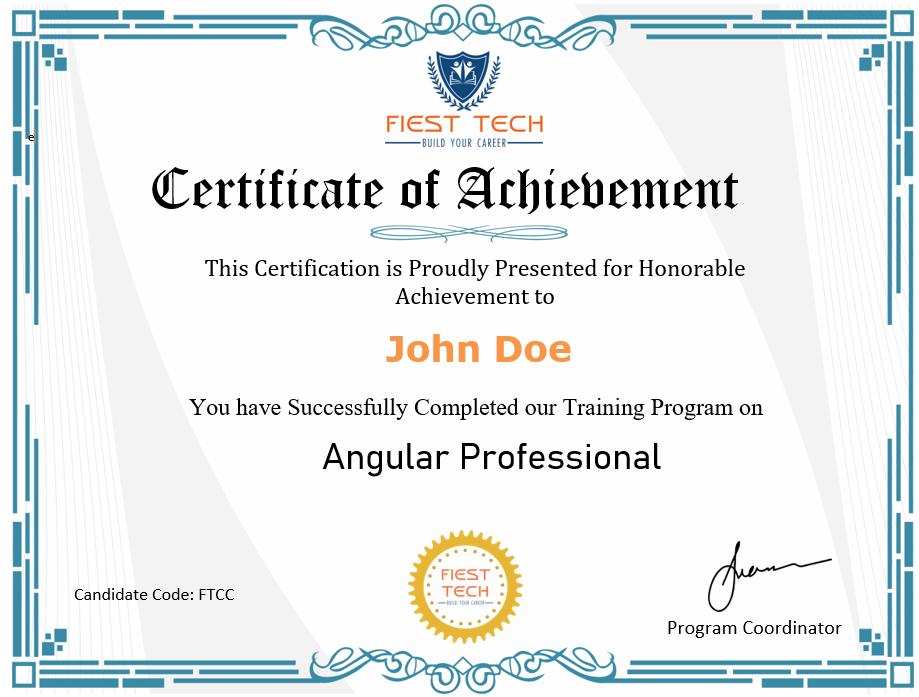
FAQS
Angular Certification Training Course FAQs
-
Angular has changed the entire picture of developing a web-based application and has been dominating the entire web market by offering a simplified and sophisticated way to manage the code. It aims to fulfill the expectations of modern developers who demand fast performance and responsiveness in their web applications.
- Part of its popularity is its ability to make static Web pages more dynamic, thus allowing web designers to add more tools. Organizations are seeing the benefits of adopting Angular, thus increasing the demand for Angular experts.
- Angular is a part of MEAN stack. MEAN stack is made up of MongoDB, Express.js, Angular, and Node.js. Since all the components that make up MEAN stack uses Javascript for programming, MEAN applications can be written in one language for both client-side & server-side execution.
- Angular is maintained by Google and a community of experts acting as a solution for rapid front-end development.
This Angular Training Course will help you comprehend and master concepts on Angular like facilitating the development of single-page web applications, dependency injection, typescript, components, directives, model-view-controller, etc.
This Angular Certification training makes it is easy to grasp and enables one to develop robust applications for projects of any scale. Also, Angular makes use of TypeScript and is much faster and more mobile-oriented than it's predecessor - AngularJS.
By the end of this Angular Training course, you will comprehend the following:
- Understand the design of single-page applications and how Angular facilitates their development
- Understand the Angular architecture
- Work with TypeScript
- Develop components, use directives, and work with data binding
- Work with Service and Dependency Injection
- Create and validate model-driven forms
- Work with the Model-View-Controller (MVC)
- Use HTTP with Observables, routing, and pipes
- Use custom pipes and directives
- Perform unit testing
- Use Angular CLI
- Develop attractive UI using Bootstrap
All our trainers are certified and are highly qualified, with multiple years of experience in working with front-end development technology.
This Angular Training course is ideal for :
- Aspirants and students who wish to learn UI development
- UI Developers
- Technical Project Managers and Technical Leads
- Full Stack Web Developers
- QAs, Architects
- Entrepreneurs or aspiring entrepreneurs who want to learn a state-of-the-art front-end JavaScript framework
According to PayScale, Angular Developers earn an average of $83,000 per year.
-
You will need to download the following softwares:
- Visual Studio Code editor - IDE
- Node.js 6.x or below
The detailed installation process will be covered by the instructor during the Angular Course.
All the classes are live. They are interactive sessions that enable you to ask questions and participate in discussions during the class time. We do, however, provide recordings of each session you attend for your future reference.
Yes, you can cancel your enrolment if necessary. We will refund the course price after deducting an administration fee. To learn more, you can view our Refund Policy.
Related Programs
Software Development Related Programs

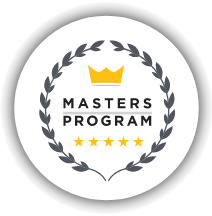
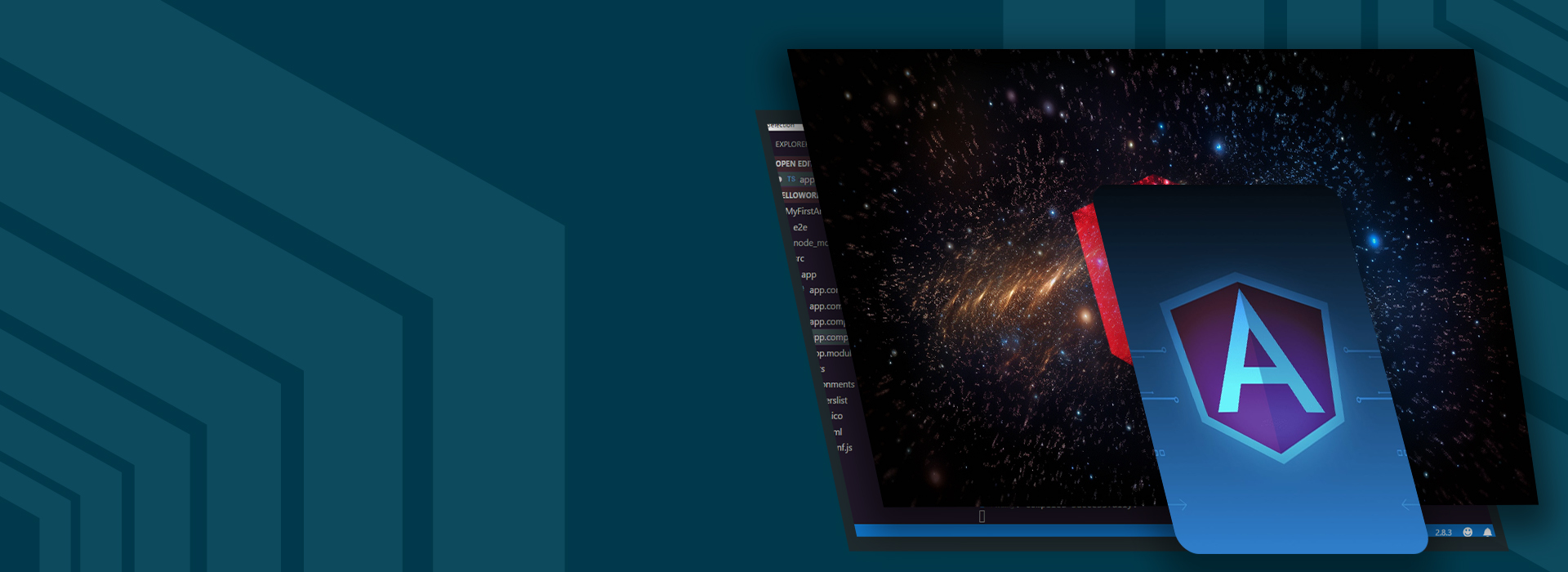
_Certification-Cloud_Computing.jpg)


